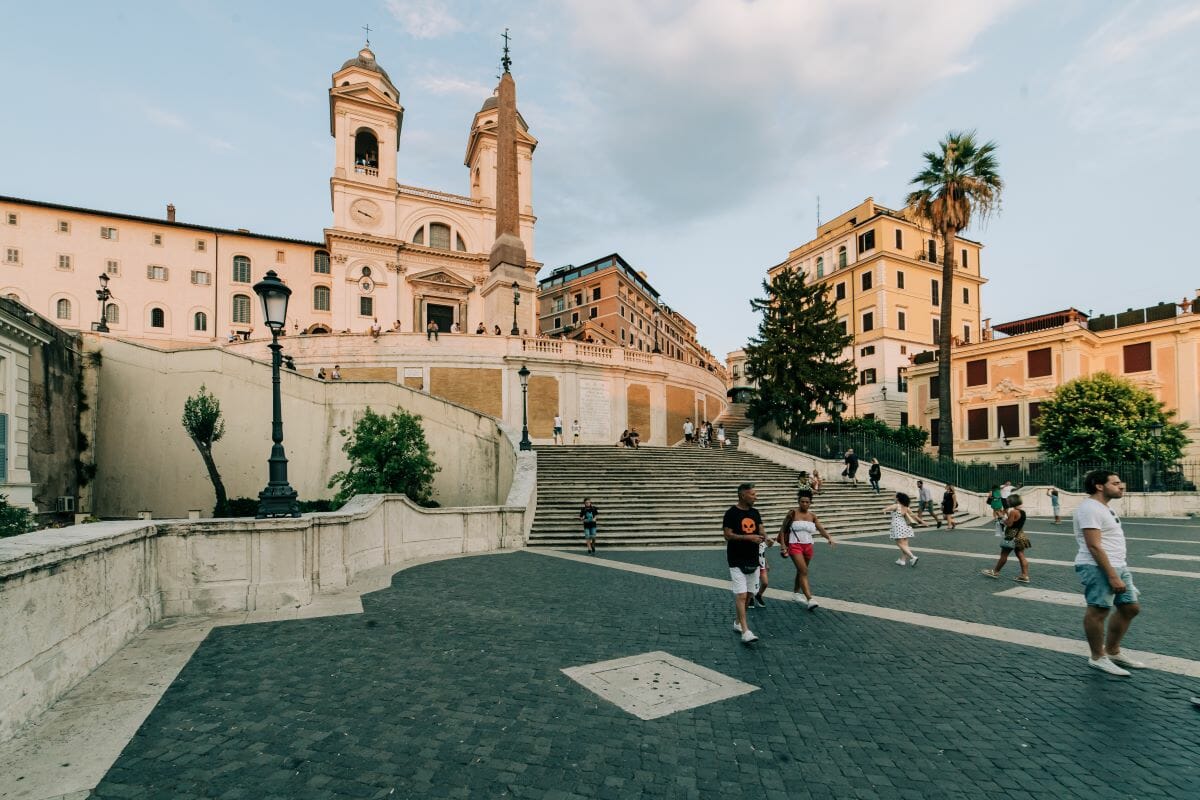
Rome’s Spanish Steps: Your Comprehensive Insider’s Guide
September 4, 2023
Rome is one of the most famous cities in the world, with a plethora of things to do, see, eat and learn about. One of most famous landmarks in the city is undoubtedly the Spanish Steps (or, Scalinata di Trinità dei Monti), which partly became so popular among tourists due to their appearance in the 1953 classic film Roman Holiday starring Audrey Hepburn and Gregory Peck.
Read along to find out more about the history of the steps (which, despite their name, were built by an Italian and funded by a Frenchman…complicated!), the ideal times to go, and information about nearby landmarks.
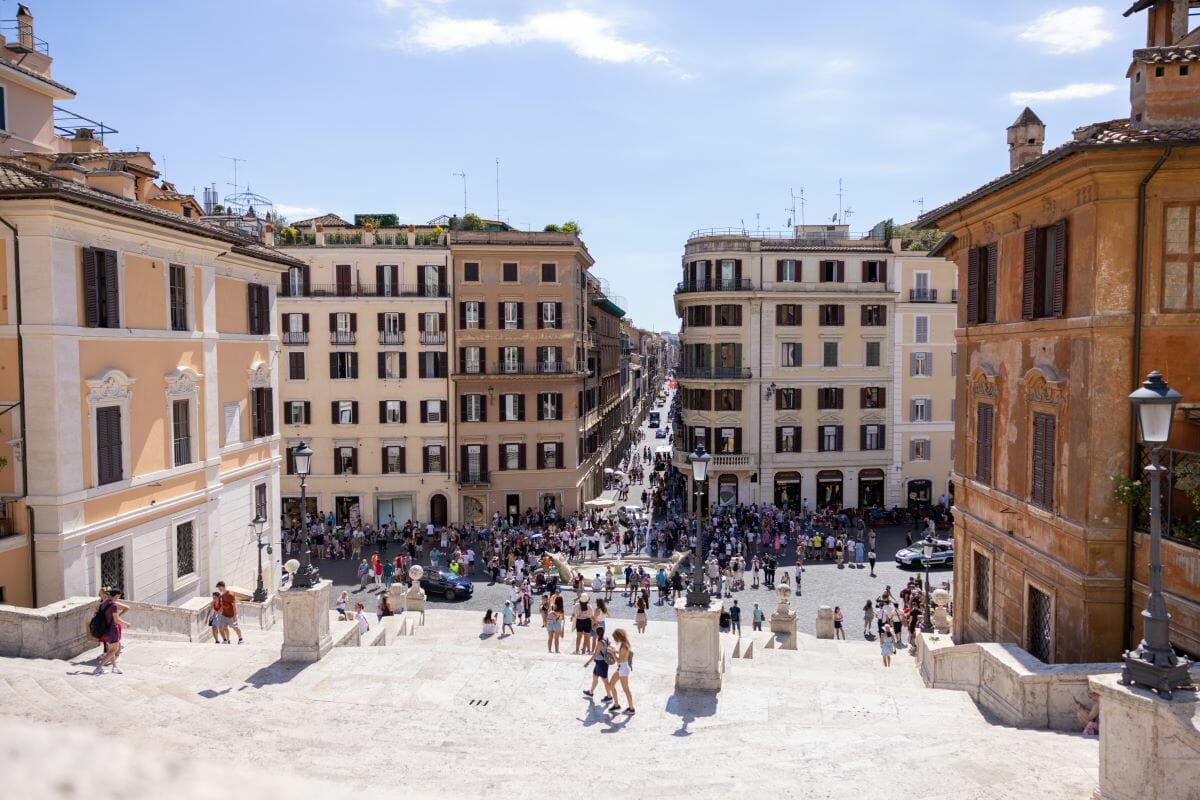
The view from the Spanish Steps offers gorgeous view of Rome’s city center. Photo credit: Corrett Campbell
Table of Contents
ToggleA brief history of the Spanish Steps
During the 17th century, the French wanted to create a symbolic connection between France and Spain in Rome. However, a wooded hill separated the newly-built Trinità dei Monti church, owned by the French, from the Piazza di Spagna, named for the Bourbon Spanish Embassy that stood alongside it. A competition was held for the best design and the winner—a little-known sculptor named Francesco de Sanctis—gave the world the Spanish Steps.
Étienne Gueffier, who was a French diplomat, funded the creation of the steps. The original design included an equestrian statue of King Louis XIV of France at the top, but ultimately was never built. However, the steps have a small touch of French flair with carvings of the fleurs-de-lis of the Bourbon family plus the checkered eagle coat of arms of Pope Innocent XIII.
The 135-step staircase is one of the grandest public works in Europe and is bookended by two of Rome’s most whimsical monuments: the Fontana della Barcaccia and the Sallustiano Obelisk. The first foreigners to make the steps famous were Romantic writers of the 19th century, such as John Keats who died in a house overlooking them. Since then, everyone from Audrey Hepburn in Roman Holiday to Ray Romano in Everybody Loves Raymond has made the Spanish Steps part of their Roman sojourns.
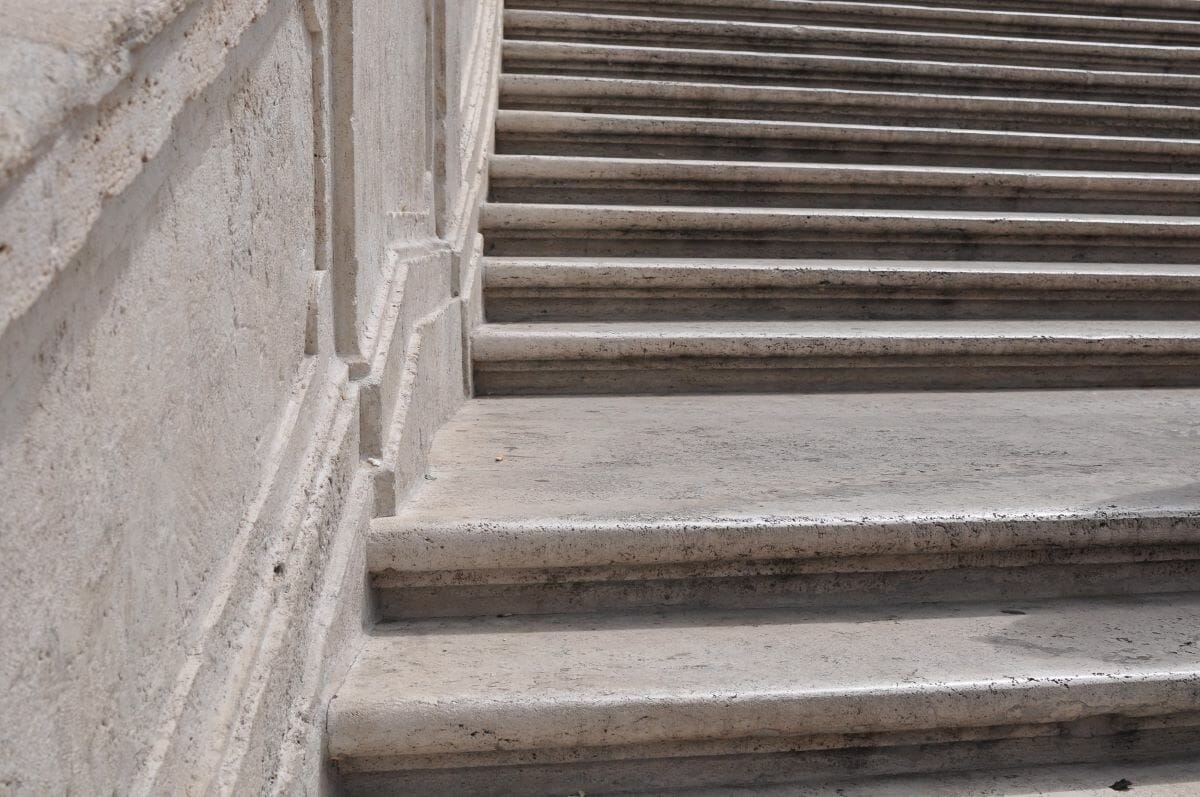
There are 135 Spanish Steps. Photo credit: morebyless
Things to see at the Spanish Steps
If you’re planning to see Rome’s famous Spanish Steps, don’t miss all that there is to do and see nearby!
Piazza di Spagna
This piazza (square) is one of thousands located throughout Rome, but is certainly one of the most visited and well-known.
The square is named after the Palazzo di Spagna, which houses the Spanish Embassy to the Holy See (it’s also in close relation to the Tiber River and not far from Piazza Navona).
Piazza di Spagna is also in close proximity to one of Rome’s most controversial landmarks: McDonald’s. Since its opening in 1986, the fast food chain has faced opposition from various quarters, including fashion house Valentino, which is located nearby and shares an underground basement with the restaurant. Valentino complained that fashion and fast food could not coexist and petitioned for the fast food chain to vanish. Despite the pushback, McDonald’s decided to stay put but installed a world-class air filtration system to eliminate harsh smells that could bother the fashion house.
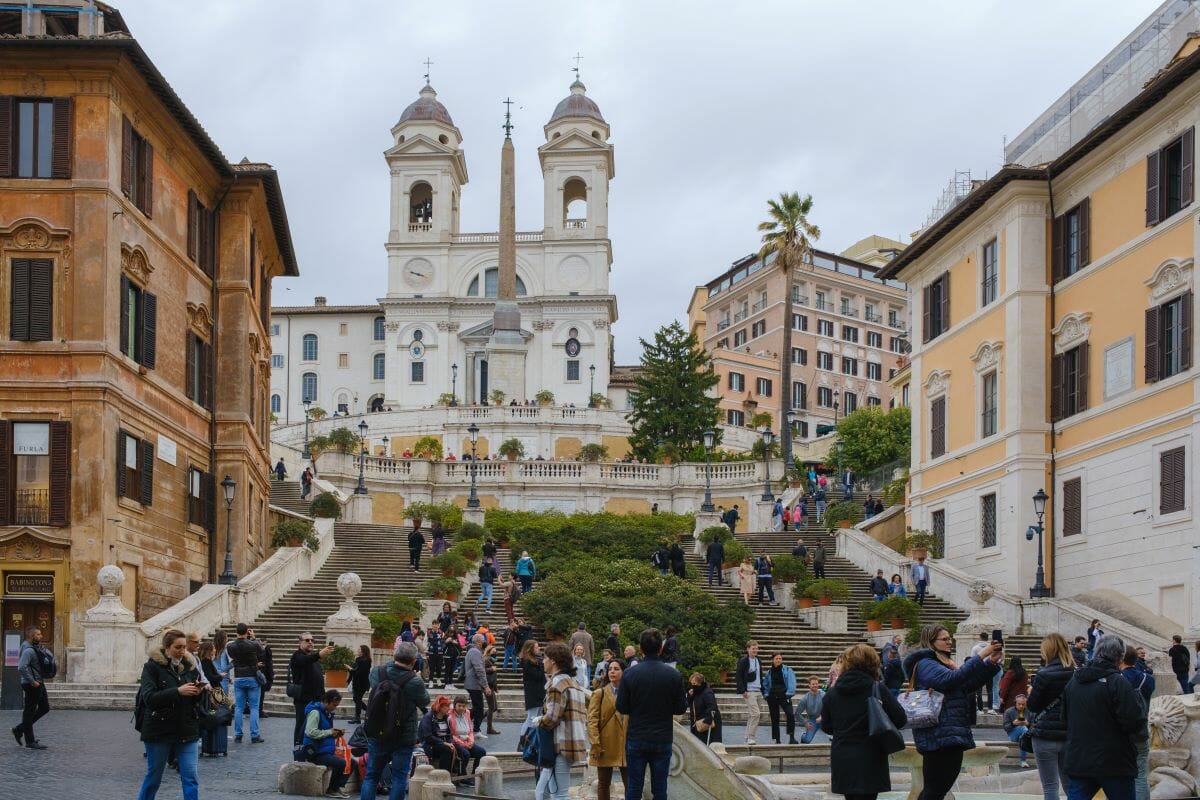
There are so many piazzas in Rome, and Piazza di Spagna is one of the most famous. Photo credit: Jose Maria Sava
Fontana della Barcaccia
In 1598, record floods along the Tiber river filled Piazza di Spagna with over three feet of water. According to the story, the wreckage of an old boat that had floated through the streets finally came to a rest there.
This boat is said to be the inspiration for the fountain, aptly named Fontana della Barcaccia (“Fountain of the leaky boat”). It was commissioned by Pope Urban VIII and sculpted by Pietro Bernini and his son, the great Gian Lorenzo Bernini.
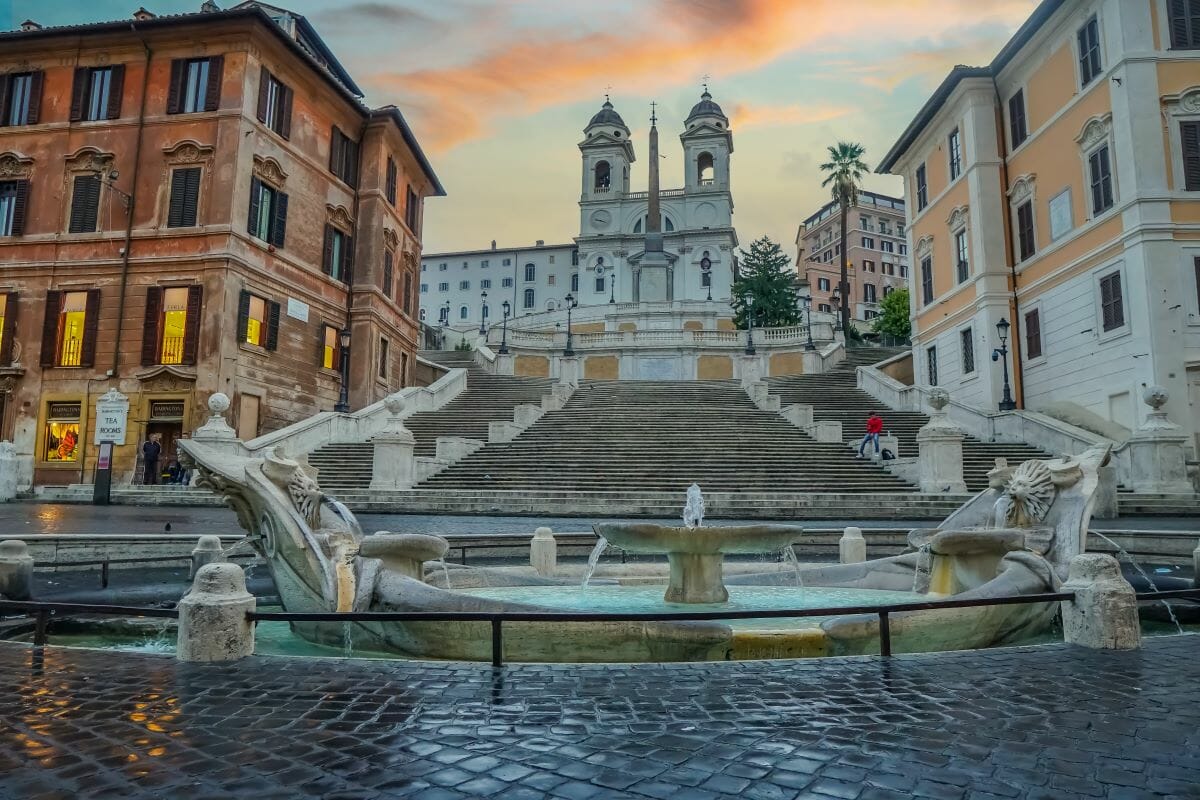
Rome’s Spanish Steps were constructed between 1723 and 1725. Photo credit: Shai Pal
Sallustiano Obelisk and the Church of Trinità dei Monti
The Trinità dei Monti is—by one of the many quirks of Roman history—maintained by France, making it perhaps the most famous French church that’s not in France.
While its façade and its perch atop the Spanish Steps garner greater notoriety, the interior also unveils a captivating gem: Daniele Da Volterra’s exquisite painting, “The Deposition.”
Da Volterra has provided a source of amusement for art historians due to his assignment of adorning loin cloths onto the nude figures in Michelangelo’s Last Judgment within the Sistine Chapel. As a result of this task, he earned the enduring nickname “Il Braghettone,” which translates to “The Trouser Maker.”
The Sallustiano Obelisk, which is located at the summit of the Spanish Steps, rules over the steps, and faces the church. A large stone plinth that resembles one of the many obelisks that Roman emperors brought back from Egypt is actually a cunning Roman imitation. The hieroglyphics from the “authentic” Flaminio Obelisk, one of Rome’s most iconic monuments, were even copied by the sculptors.
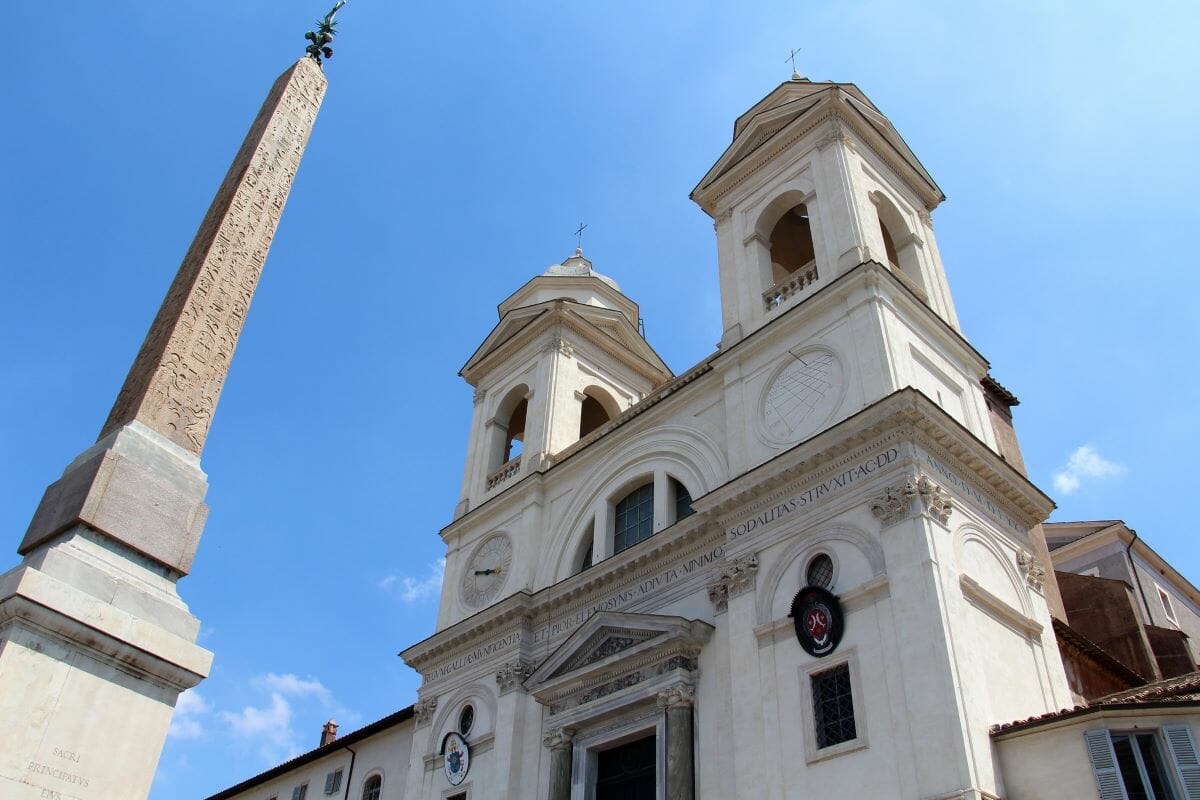
The Church of the Santissima Trinità dei Monti features a distinctive French Gothic architectural style. Photo credit: Fred Romero
Keats-Shelley Memorial House
Italy profoundly influenced the Romantic writers and artists of the 18th and 19th centuries. You can trace the paths of Shelley and Byron by visiting Lake Como, follow Goethe’s journey through Sicily, or seek the spirit of D.H. Lawrence amid the lemon groves of the Amalfi Coast.
To immerse yourself in the Romantics’ Rome, head to John Keats’ House overlooking the Spanish Steps. It’s more a place where he passed away from tuberculosis than where he resided, but this transformation into a museum for the Romantics feels oddly fitting, encapsulating life’s transience.
Inside, you’ll discover perhaps the world’s most extensive collection of memorabilia from this remarkable generation of mainly English artists, featuring works by Keats, Shelley, Wordsworth, Oscar Wilde, and others. While there, take a moment to try to catch the sound of the waters from the Fontana della Barcaccia. Legend has it that this sound comforted Keats in his final moments and inspired the line he wished for on his epitaph: “Here lies one whose name was written in water.”
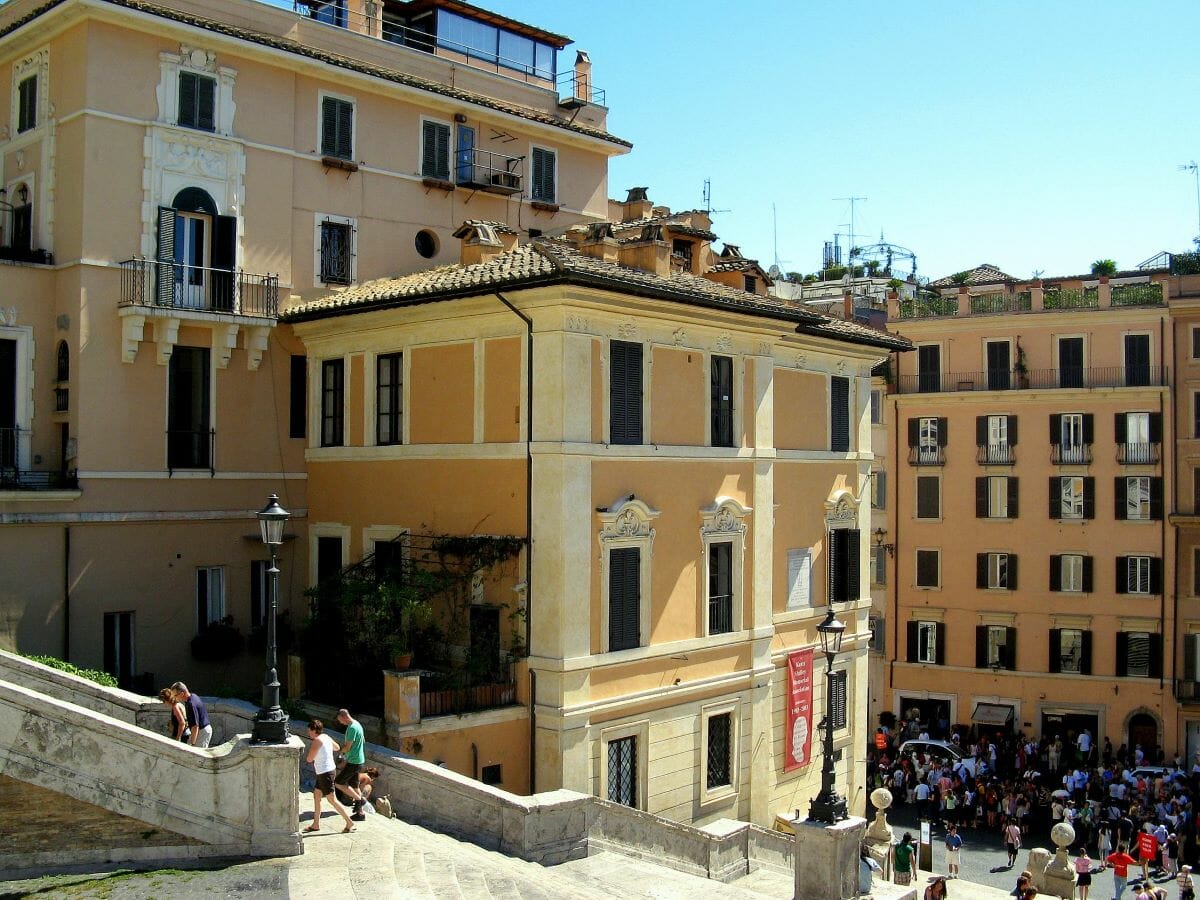
The Keats-Shelley Memorial House has become a pilgrimage site for literature enthusiasts from around the world. Photo credit: HarshLight
Insider’s tip: If you’re eager to delve into more detailed narratives of these well-known sites, along with discovering other essential landmarks in Rome, consider embarking on the Welcome to Rome tour.
Best times to visit the Spanish Steps
Being such a popular spot in Rome, the concept of a truly “quiet” time to experience the Spanish Steps (as well as other prominent landmarks in the city) might be a bit elusive. From dawn till dusk, you’ll find people in the piazza and congregating on the steps.
That being said, early in the morning (around 7 or 8 AM) is probably your best bet for a chance at beating the crowds. When it comes to Rome in general, the best times to visit are during the shoulder seasons of spring (April to June) and fall (September to October).
During these months, the weather is generally pleasant, with milder temperatures and fewer crowds compared to the peak summer season.
Annual springtime flower display on the Spanish Steps
During the end of April, the Spanish steps are adorned with beautiful azalea flowers to celebrate the city’s birthday, otherwise known as “Natale di Roma” or “Compleanno di Roma,” which is held on April 21. This tradition dates back over 80 years, and is a treat for locals and visitors alike. If you’re visiting Rome during this time, definitely check it out!
Tips for visiting the Spanish Steps
Because the Spanish Steps are an open-air public landmark and don’t ask for any ticket fees, there’s not a whole lot to worry about before you head over. Just remember these tips:
Don’t sit on the Spanish Steps
Since August 2019, sitting on the Spanish Steps is no longer allowed, and could get you into trouble in Italy. It’s also forbidden to eat or write on them and fines can be hefty for offenders. It seems harsh, but these measures are in place to protect important landmarks and historical monuments in the city.
Avoid pickpocketing in Rome
As usual, exercise caution with your belongings when exploring busy landmarks and moving around Rome in general. Additionally, stay vigilant of sellers who might try to push “gifts” like bracelets or roses on you and later demand payment. These encounters are common around the Spanish Steps, so be alert!
This article was originally published on June 16, 2021 and was updated on August 31, 2023.
by Chiara R.
View more by Chiara ›Book a Tour

Pristine Sistine - The Chapel at its Best
€89
1794 reviews

Premium Colosseum Tour with Roman Forum Palatine Hill
€56
850 reviews

Pasta-Making Class: Cook, Dine Drink Wine with a Local Chef
€64
121 reviews

Crypts, Bones Catacombs: Underground Tour of Rome
€69
401 reviews

VIP Doge's Palace Secret Passages Tour
€79
18 reviews

Legendary Venice: St. Mark's Basilica, Terrace Doge's Palace
€69
286 reviews









